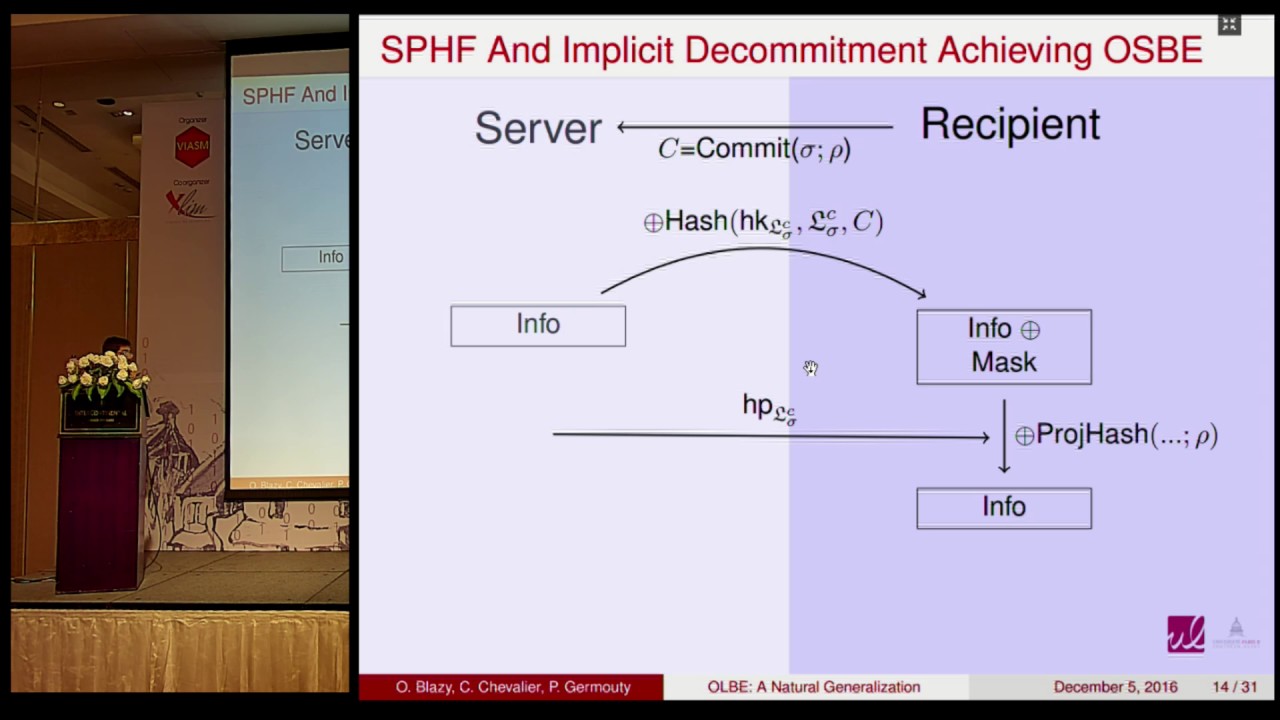Welcome to the resource topic for 2016/259
Title:
Adaptive Oblivious Transfer and Generalizations
Authors: Olivier Blazy, Céline Chevalier, Paul Germouty
Abstract:Oblivious Transfer (OT) protocols were introduced in the seminal paper of Rabin, and allow a user to retrieve a given number of lines (usually one) in a database, without revealing which ones to the server. The server is ensured that only this given number of lines can be accessed per interaction, and so the others are protected; while the user is ensured that the server does not learn the numbers of the lines required. This primitive has a huge interest in practice, for example in secure multi-party computation, and directly echoes to Symmetrically Private Information Retrieval (SPIR). Recent Oblivious Transfer instantiations secure in the UC framework suf- fer from a drastic fallback. After the first query, there is no improvement on the global scheme complexity and so subsequent queries each have a global complexity of O(|DB|) meaning that there is no gain compared to running completely independent queries. In this paper, we propose a new protocol solving this issue, and allowing to have subsequent queries with a complexity of O(log(|DB|)), and prove the protocol security in the UC framework with adaptive corruptions and reliable erasures. As a second contribution, we show that the techniques we use for Obliv- ious Transfer can be generalized to a new framework we call Oblivi- ous Language-Based Envelope (OLBE). It is of practical interest since it seems more and more unrealistic to consider a database with uncontrolled access in access control scenarii. Our approach generalizes Oblivious Signature-Based Envelope, to handle more expressive credentials and requests from the user. Naturally, OLBE encompasses both OT and OSBE, but it also allows to achieve Oblivious Transfer with fine grain access over each line. For example, a user can access a line if and only if he possesses a certificate granting him access to such line. We show how to generically and efficiently instantiate such primitive, and prove them secure in the Universal Composability framework, with adaptive corruptions assuming reliable erasures. We provide the new UC ideal functionalities when needed, or we show that the existing ones fit in our new framework. The security of such designs allows to preserve both the secrecy of the database values and the user credentials. This symmetry allows to view our new approach as a generalization of the notion of Symmetrically PIR.
ePrint: https://eprint.iacr.org/2016/259
Talk: https://www.youtube.com/watch?v=hMqnHC4-2A0
Slides: https://iacr.org/cryptodb/archive/2016/ASIACRYPT/presentation/27882.pdf
See all topics related to this paper.
Feel free to post resources that are related to this paper below.
Example resources include: implementations, explanation materials, talks, slides, links to previous discussions on other websites.
For more information, see the rules for Resource Topics .
